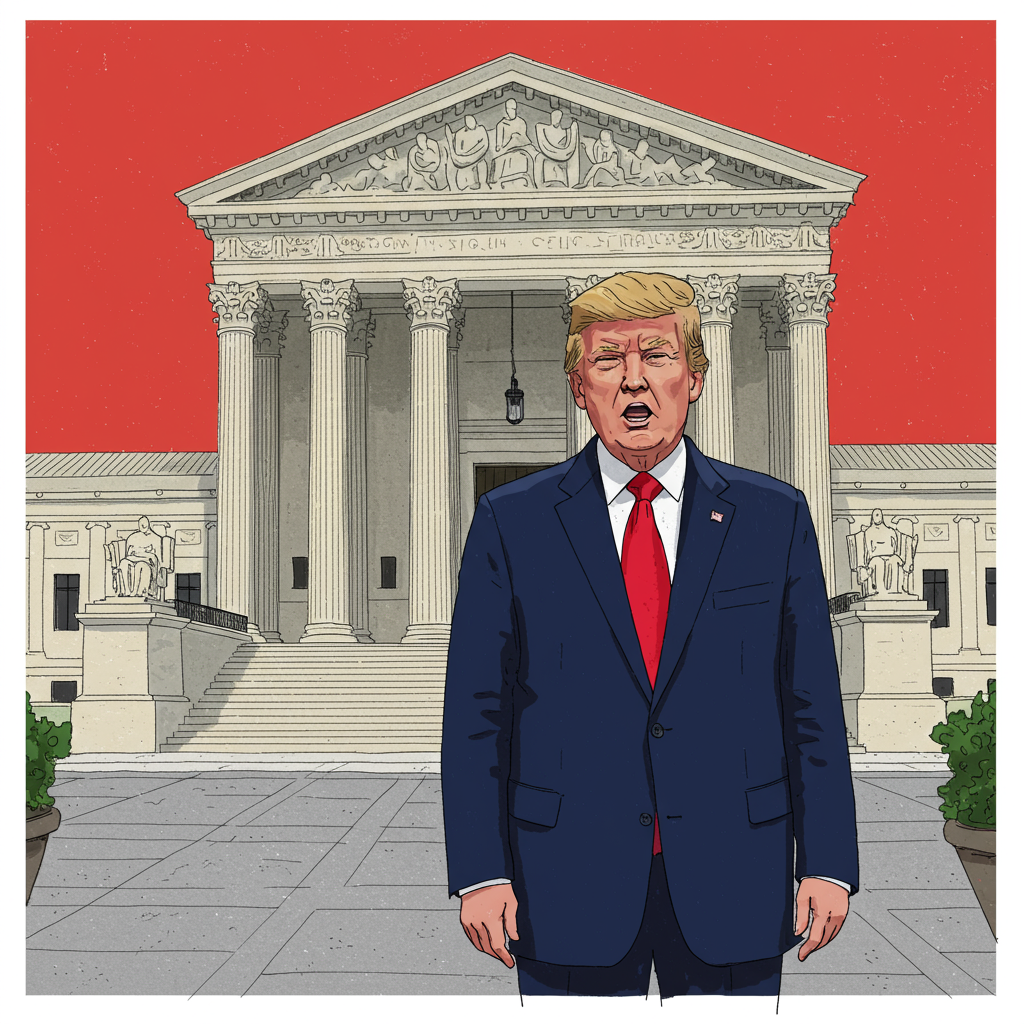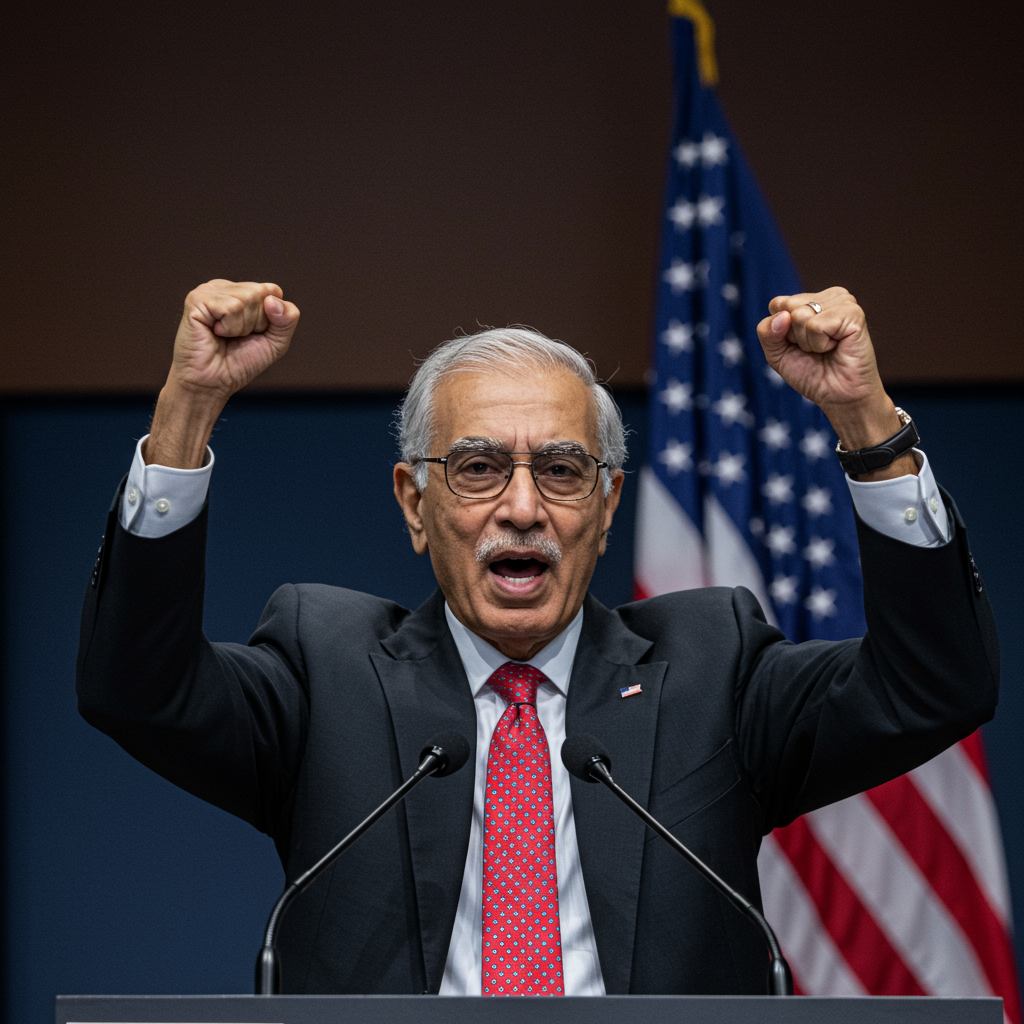In a significant move impacting the future of the United States federal workforce, the Supreme Court has cleared a crucial legal hurdle for President Donald Trump’s ambitious plans to dramatically downsize and reorganize federal government agencies. The high court on Tuesday, July 8, 2025, issued an unsigned order effectively lifting a lower court injunction that had temporarily blocked the administration from implementing these sweeping changes. This decision marks another notable win for the Trump administration at the Supreme Court, allowing reorganization efforts and potential mass layoffs to advance, at least for now.
The President’s Plan to Reshape Government
President Trump campaigned on a promise to streamline the federal bureaucracy, often criticizing its size and scope. Following through on this pledge, the administration initiated a process aimed at significantly reducing the number of federal employees and restructuring various departments. This push gained momentum with an executive order signed in mid-February, which directed agencies to develop plans for “reduction in force” (RIF) and large-scale reorganization. The administration argued these steps were necessary to improve efficiency and responsiveness across the federal government.
The goal was not modest. Initial proposals outlined potential layoffs affecting tens of thousands of federal employees. The president and figures like Elon Musk, who leads the newly formed Department of Government Efficiency (DGE), contended that the federal bureaucracy was excessively “bloated.” Their efforts, rapidly integrating into key agencies, reportedly led to swift changes, including firings, access to government systems, and even the virtual shuttering of entities like the U.S. Agency for International Development (USAID) and the Consumer Financial Protection Bureau (CFPB). A Reuters tally from late April indicated approximately 260,000 civil servants had already left their positions through various means since the initiative began in January.
Legal Challenges Emerge
Almost immediately, these plans faced strong opposition. A coalition comprising more than a dozen unions, non-profits, and local governments filed a lawsuit challenging the administration’s authority. They argued that large-scale restructuring and mass layoffs of the federal workforce require congressional approval. Federal departments are established by law, and opponents contended the White House could not unilaterally dismantle them or leave them so understaffed they couldn’t fulfill their legal duties. This coalition warned the administration’s plans could potentially lead to hundreds of thousands of federal job losses, jeopardizing essential public services.
Lower courts agreed with the challengers, at least initially. U.S. District Judge Susan Illston in San Francisco, an appointee of former President Bill Clinton, issued a ruling in May that blocked the administration from conducting these deep layoffs and reorganizations. Judge Illston determined that President Trump had overstepped his executive authority. Her ruling emphasized that presidents must partner with Congress for such significant executive branch reorganizations, citing historical precedent requiring congressional authorization for broad federal agency restructuring. The 9th US Circuit Court of Appeals declined to intervene, leaving the block in place.
Supreme Court Steps In
The Trump administration appealed the lower court block to the Supreme Court in early June. In their brief, unsigned order, the Supreme Court sided with the administration’s request to halt the lower court’s injunction. The high court stated that the government was “likely to succeed” on its argument that the executive order and related directives initiating the planning process were legally permissible.
The Court’s order suggested the lower courts had erred by blocking the administration’s general effort based on the broad executive order, rather than waiting to assess specific agency reduction-in-force plans. “Because the government is likely to succeed on its argument that the executive order and memorandum are lawful … we grant the application,” the court wrote.
Why the Court Acted Now
Crucially, the Supreme Court’s ruling did not evaluate the legality of any specific agency RIF or reorganization plan developed under the executive order. The Court explicitly stated, “We express no view on the legality of any agency RIF and reorganization plan produced or approved pursuant to the executive order and memorandum.” This means while the administration can proceed with the planning process and potentially begin implementing some changes, specific layoffs and restructurings could still face future legal challenges. These challenges might be based on statutory restrictions, existing civil service protections, or arguments that the cuts prevent an agency from carrying out its legally mandated responsibilities. The Court effectively left the door open for future rulings on the legality of the outcomes of the process it just allowed to move forward.
Varied Reactions to the Ruling
The Supreme Court’s decision drew starkly different reactions from the parties involved.
The White House hailed the ruling as a clear validation of the President’s authority. White House spokesman Harrison Fields called it “another definitive victory for the President and his administration.” He added that the decision “clearly rebukes the continued assaults on the president’s constitutionally authorized executive powers by leftist judges who are trying to prevent the president from achieving government efficiency across the federal government.” Sources within the White House cautioned, however, that the ruling doesn’t immediately permit agencies to execute layoffs and acknowledged that future delays or legal challenges remain possible.
The coalition of unions, non-profits, and local governments that brought the lawsuit expressed deep disappointment and concern. In a statement, they asserted that the decision “has dealt a serious blow to our democracy and puts services that the American people rely on in grave jeopardy.” They maintained their position that reorganizing government functions and laying off federal workers haphazardly without congressional approval is unconstitutional. The coalition pledged to continue their legal fight to protect critical public services.
Dissent and Concurrence Highlights
Justice Ketanji Brown Jackson, a member of the court’s liberal wing, was the lone public dissenter from the unsigned order. In a strong rebuke, she described the majority’s decision as “not only truly unfortunate but also hubristic and senseless.” Justice Jackson argued that lower court judges are best positioned to understand the relevant facts and assess the potential harms of such actions. She criticized the court for stepping in early, before the changes had fully manifested, seeing it as “releasing the president’s wrecking ball at the outset of this litigation.” She also criticized what she called the court’s “demonstrated enthusiasm for greenlighting this president’s legally dubious actions in an emergency posture,” referencing this decision within a pattern of other controversial pro-Trump rulings often made quickly via the court’s “shadow docket.”
Justice Sonia Sotomayor, another liberal justice, agreed with the decision to lift the injunction but offered a separate concurring statement. She noted her agreement with Justice Jackson that the president cannot restructure federal agencies in a manner inconsistent with congressional mandates. However, Justice Sotomayor found this specific executive order acceptable at this stage because it directs agencies to plan reorganizations and reductions “consistent with applicable law.” Her concurrence seemed to underscore the limited scope of the ruling – that the planning can continue if it adheres to existing laws, leaving the door open for challenges if specific plans violate those laws or congressional intent.
Scope of Potential Changes
The executive order and subsequent agency plans cover potential major reductions across more than a dozen federal agencies. These include large cabinet departments like Agriculture, Commerce, Energy, Labor, Treasury, State, Health and Human Services (HHS), and Veterans Affairs, as well as agencies such as the Environmental Protection Agency (EPA).
Specific examples of proposed cuts mentioned in court records highlight the potential scale. This included a reduction of some 10,000 positions across public health agencies like the Centers for Disease Control and Prevention (CDC), the Food and Drug Administration (FDA), and the National Institutes of Health (NIH). The Treasury Department proposed a significant 40% reduction in Internal Revenue Service (IRS) positions. The Department of Veterans Affairs (VA) had initially planned to eliminate 80,000 jobs, though that figure was later reduced to 30,000, with the VA stating it would primarily be achieved through hiring freezes and attrition.
The Broader Context and Drivers
The drive for mass layoffs is part of a more extensive campaign launched by President Trump early in his term to significantly curb the size of the 2.3-million strong federal civilian workforce. This initiative has been notably championed by Elon Musk and his Department of Government Efficiency. Trump and Musk argue that downsizing is essential to reduce waste and improve government function.
Conversely, federal workers’ unions and many Democrats argue the cuts implemented so far and the planned layoffs are being executed haphazardly. They contend this approach is creating chaos within agencies and directly threatens vital public services, including critical functions like the processing of Social Security claims or public health initiatives.
This Supreme Court ruling occurs within a pattern. As Justice Jackson noted, the Supreme Court under Chief Justice John Roberts has often sided with the Trump administration in rapid, emergency decisions. Previous such rulings referenced include allowing the administration to resume deporting migrants without hearings, ending temporary humanitarian legal status for hundreds of thousands, permitting a ban on transgender people in the military, blocking an order to rehire fired employees, and curbing the power of federal judges to issue nationwide injunctions against presidential policies.
Public Perception and What’s Next
Public opinion on the federal downsizing effort appears divided. A Reuters/Ipsos poll from April indicated a narrow majority of Americans favored Trump’s plans to cut the federal workforce (56% support vs. 40% oppose). Support showed a significant partisan split, with overwhelming Republican backing (89%) contrasting sharply with low Democratic support (26%).
Following the Supreme Court’s decision, some agencies whose downsizing plans had been paused due to the lower court order indicated they would resume advancing these efforts. For instance, the State Department, which had proposed laying off nearly 2,000 employees, stated it would “continue to move forward with our historic reorganization plan.” HHS also confirmed its intention to proceed with its plans to “transform this department to Make America Healthy Again.”
While the immediate legal block is removed, the battle is far from over. The Supreme Court’s ruling specifically avoided validating the legality of the outcomes – the actual layoffs and reorganizations. This leaves the door open for future lawsuits challenging specific agency plans based on various grounds, including whether the cuts violate specific laws mandating agency functions or civil service protections. The coalition that filed the initial suit is expected to continue its legal fight as specific plans emerge.
Frequently Asked Questions
What was the Supreme Court’s ruling on President Trump’s plan to reduce the federal workforce?
On Tuesday, July 8, 2025, the Supreme Court issued an unsigned order lifting a lower court injunction. This decision allows the Trump administration to proceed with planning and potentially implementing its large-scale reorganization and downsizing of federal agencies, which could include mass layoffs affecting tens or hundreds of thousands of employees. The Court determined the administration was likely to succeed in arguing its executive order initiating the planning was lawful, effectively removing the initial block.
Why did lower courts initially block the federal government downsizing plans?
Lower courts, including U.S. District Judge Susan Illston and the 9th Circuit Court of Appeals, blocked the plans based on the argument that large-scale federal government restructuring and mass layoffs require explicit approval or partnership with Congress. They ruled that President Trump exceeded his executive authority by attempting such broad changes unilaterally, citing historical precedent where significant reorganizations needed legislative authorization, not just executive action.
Which federal agencies and how many employees could be affected by these potential job cuts?
The proposed plans could impact over a dozen agencies, including the departments of Agriculture, Commerce, Energy, Labor, Treasury, State, Health and Human Services (HHS), Veterans Affairs (VA), and the Environmental Protection Agency (EPA). Specific figures cited include potential cuts of 10,000 positions at public health agencies (CDC, FDA, NIH), 40% of IRS positions, and 30,000 jobs at the VA (though primarily through attrition). Opponents warned the total impact could potentially affect hundreds of thousands of federal jobs across the government.
Conclusion
The Supreme Court’s decision marks a pivotal moment, removing a significant barrier to President Trump’s efforts to dramatically reshape the federal government. By lifting the injunction, the Court has allowed the administration to move forward with its plans for potential mass layoffs and agency reorganizations, championed by figures like Elon Musk as necessary for efficiency. However, this ruling does not rubber-stamp the legality of the specific changes that may occur. The Court explicitly left the door open for future legal battles over individual agency plans, meaning the fight over the size and structure of the federal workforce is likely to continue through the courts and in public debate. The ultimate scope and impact of these proposed cuts remain subjects of intense legal, political, and social contention.



